Boxer dogs are known for their interesting and different coat styles, making them a very interesting breed to look at. It’s not just about how they look; understanding the genetics behind Boxer dog coat colors is important, especially for breeders and fans. These coat colors play a big role in how Boxers look overall and show what makes the breed unique.
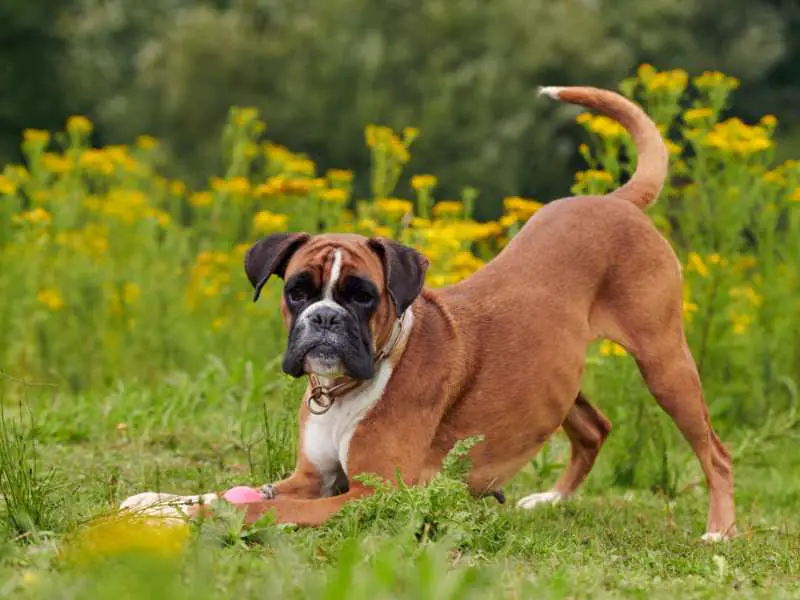
Boxers mostly come in two main coat colors: fawn and brindle. In this full exploration of Boxer coat colors, we will go into these exciting shades, figure out the genetic mysteries behind them, and provide insights into what makes each color special.
Whether you own a Boxer, breed Boxers, or simply like this remarkable breed, this guide will help you understand the amazing variety of colors that these friendly dogs have. Join us on this tour through the colorful world of Boxer Coats.
The Standard Boxer Coat Color📏
When it comes to Boxer coat colors, the one that easily comes to mind is the classic fawn coat with a black mask. This coat style defines the breed’s quintessential look, and understanding its details is crucial in recognizing a real Boxer.
Fawn Boxers come in a range of shades, from a light tan like a sandy beach to a deeper, richer color called mahogany. It’s this beautiful variety that makes fawn Boxers so interesting to look at.
What truly sets the fawn Boxer apart, however, is the black mask. This special feature includes the black hairs that gracefully cover the Boxer’s mouth and face. It’s not just about how they look; the black mask is an important part of the Boxer’s identity.
The Importance of the Black Mask
The black mask isn’t just by chance; it’s because of the breed standard. Boxer fans place great importance on this mask, considering it an essential part of the true Boxer expression. While it should be clear, it shouldn’t be too much, striking a delicate balance that improves the Boxer’s unique charm.
The black mask isn’t just a style choice; it’s a dominant trait coded in the Boxer’s genes, specifically the Eumelanin gene. This genetic element ensures that this striking coat pattern is consistently passed down through generations.
For a visual picture of the classic fawn and black mask Boxer, imagine a sleek brown coat decorated with a dignified black mask and complemented by characteristic white markings. Or envision a Boxer with a light fawn coat, subtly highlighted by the boldness of a black mask. There are even those with a deep, royal mahogany hue and a black mask that gives a sense of timeless elegance.
These fawn Boxers, with their black masks and often white markings, embody the very essence of this remarkable breed. They are a testament to the Boxer’s unique mix of strength, grace, and undeniable charm.
Fawn and Brindle Variations 🦁
Fawn Coat Color
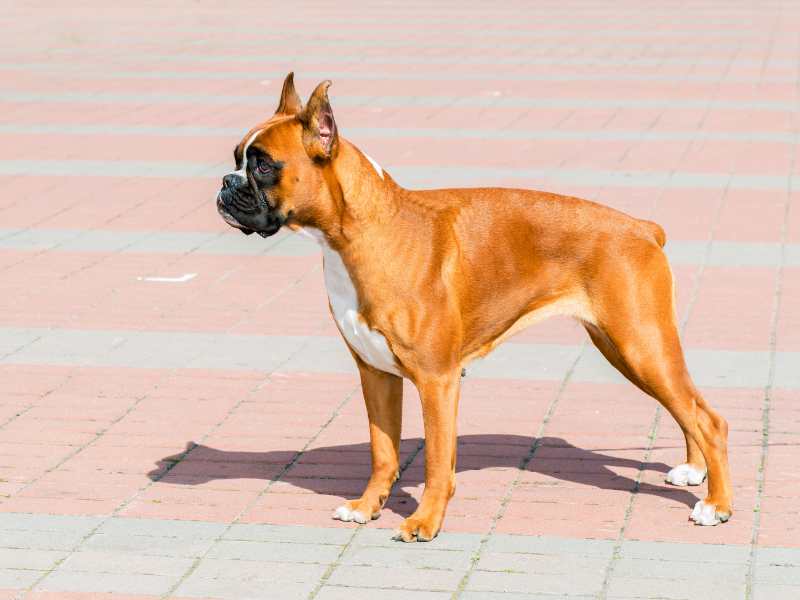
Delving into the captivating world of Boxer coat colors, we arrive at the enchanting realm of fawn. The fawn coat color, although seemingly straightforward, reveals a tapestry of shades and variations that enhance the breed’s visual allure.
Fawn Boxers span a palette of hues, ranging from the gentle warmth of light tan to the rich and regal tones of dark deer red, often referred to as mahogany. Imagine the creamy elegance of milk chocolate; that’s the lighter end of the fawn spectrum. These variations ensure that no two fawn Boxers are exactly alike, each possessing its unique charm.
Fawn isn’t exclusive to Boxers; it’s a color found in other breeds as well. However, in the world of Boxers, the fawn exhibits its distinctive character. Some fawn Boxers exhibit deeper burnished red tones, while others showcase a full spectrum, from light yellow to dark, almost fiery red. It’s this captivating range that makes Fawn Boxers stand out.
When picturing a fawn Boxer, you may envision a sleek brown coat adorned with a classic black mask and often complemented by characteristic white markings. These white markings can enhance their appearance, adding to their charismatic charm. However, some fawn Boxers sport the elegance of a black mask without any white markings, exuding a striking and streamlined look.
The captivating fawn coat color is underpinned by genetics, particularly the presence of the A locus gene. This gene is the conductor orchestrating the symphony of fawn shades that we see in this remarkable breed. It’s this genetic dance that gives fawn Boxers their individuality and visual appeal.
The Legacy of Fawn Boxers 🏆
Fawn Boxers have etched their mark in the breed’s history as a popular and cherished variation. Notable fawn Boxers have graced the world stage, leaving a lasting legacy. Among them, we find champions like Ch. Bang Away of Sirrah Crest, a fawn Boxer who clinched the prestigious Best in Show title at the Westminster Kennel Club Dog Show in 1951. The tradition continued with Ch. Arriba’s Prima Donna, another fawn Boxer, secured the Best in Show honor at the Westminster Kennel Club Dog Show in 1971. And in 1983, it was Ch. Cachet’s Mad Max of TuRo, a magnificent fawn Boxer, claimed the coveted Best in Show title at the same prestigious event. These remarkable Boxers not only showcase the breed’s excellence but also exemplify the enduring charm of the fawn coat color.
Related: Boxerman (Boxer & Doberman Mix): Traits, Care, and More
Brindle Coat Color
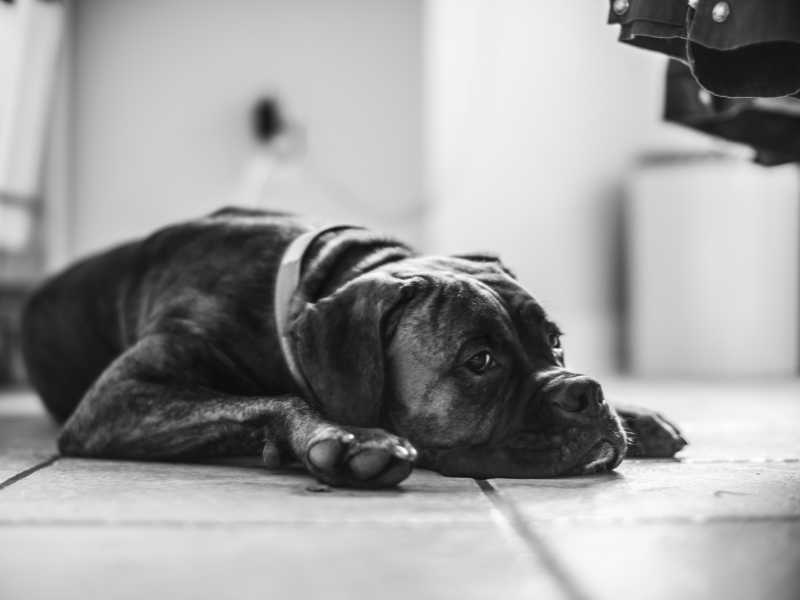
Now, let’s explore the captivating world of the brindle coat pattern, an intricate and breathtaking tapestry that graces many Boxers.
Brindle is a pattern, not a distinct color, that creates a truly unique and beautiful appearance. All brindle Boxers share a common base coat color, and that’s fawn. This base coat is usually slightly darker, adding depth and richness to the overall look.
The Genetic Magic of Brindle
The magic of brindle unfolds in the form of black striping that adorns the fawn canvas. The stripes can vary in shade, ranging from lighter to darker, and they can be either delicate or bold, making each brindle Boxer a masterpiece in its own right.
The enchanting brindle pattern is a result of the genetic influence of the K locus gene. This gene orchestrates the dance of black stripes on the fawn background, giving birth to this extraordinary coat pattern.
One glance at a brindle Boxer is enough to understand why this pattern is cherished. It’s not just a coat; it’s a work of art that accentuates the breed’s charisma and individuality.
In the world of Boxers, brindle has made its mark through some remarkable champions. Take, for instance, GCH CH R And G’s Mystical Dancer, a brindle Boxer whose grace and charm earned her the prestigious title of Best in Show at the Westminster Kennel Club Dog Show in 2010. This was a testament to the enduring allure of the brindle pattern.
The legacy of brindle Boxers continues, with champions like Ch. Bang Away of Sirrah Crest, a brindle Boxer who captured hearts and the Best in Show title at the Westminster Kennel Club Dog Show in 1951. Following in those illustrious pawprints, Ch. Arriba’s Prima Donna, another brindle Boxer, claimed the Best in Show honor at the Westminster Kennel Club Dog Show in 1971. And in 1983, Ch. Cachet’s Mad Max of TuRo, a brindle Boxer of unparalleled charm, secured the prestigious Best in Show title at the same renowned event.
These extraordinary Boxers, with their captivating brindle coats, remind us that beauty truly comes in all patterns, and the brindle pattern is nothing short of a masterpiece.
White Boxers: A Unique Phenomenon 🕊️
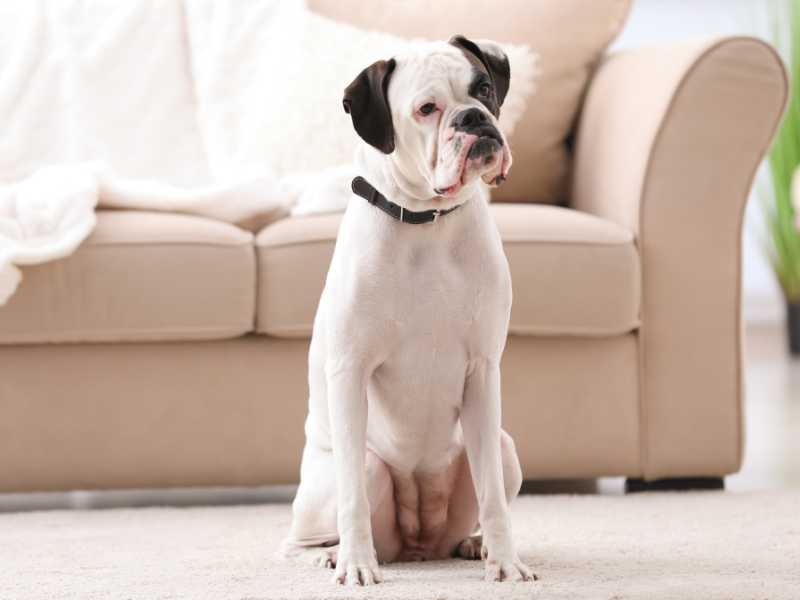
Amidst the rich tapestry of Boxer coat colors, there exists a rare and extraordinary phenomenon: the White Boxer. These enchanting canines possess a coat like no other, standing out with their pristine whiteness and minimal markings.
White Boxers are distinct because of their predominantly white coat, which may bear only a few if any, markings. This uniqueness adds to their allure, making them a source of fascination among Boxer enthusiasts.
The Genetic Complexity of White Boxers
Understanding the genetic backdrop of White Boxers reveals the complexity and controversy surrounding their breed status. Some debate whether these striking dogs truly represent the essence of the Boxer breed. It’s important to note that White Boxers are not a result of genetic birth defects; they are genetically normal Boxers who happen to have white fur.
Debates and Recognition
However, this is where the controversy arises. Some breeders express concerns that breeding White Boxers could lead to health issues, particularly deafness. While this topic continues to be debated within the Boxer community, it’s crucial to recognize that White Boxers are not a separate breed; they are purebred Boxers, sharing the same lineage and characteristics as their colored counterparts.
In the world of dog competitions, White Boxers do face limitations. The American Kennel Club (AKC) does not officially recognize them, which means they cannot participate in conformation shows. Nevertheless, this doesn’t diminish the unique charm and qualities that White Boxers bring to the hearts of those fortunate enough to call them family.
White Boxer owners, who have had the privilege of sharing their lives with these remarkable dogs, often have heartwarming stories to share. Approximately 25% of all Boxers born are white, a testament to their presence within the Boxer community. These dogs are not a product of albinism; they have colored eyes, noses, and paw pads, which contribute to their striking appearance.
Their owners emphasize that White Boxers are just as loving, loyal, and intelligent as any other Boxer. Many report that their White Boxers live happy, healthy lives, though it’s worth noting that a small percentage may experience deafness. Unfortunately, some White Boxers and their owners have faced discrimination due to their coat color, such as being denied access to dog parks or services at grooming facilities.
In essence, White Boxers are a testament to the diversity and wonder of the Boxer breed. Their uniqueness enriches the Boxer tapestry, reminding us that true beauty knows no boundaries, and every Boxer, regardless of its coat color, brings love and joy to the lives it touches.
Related: Male vs. Female Boxer Dogs: Understanding the Differences
Other Unique Coat Variations 🌟
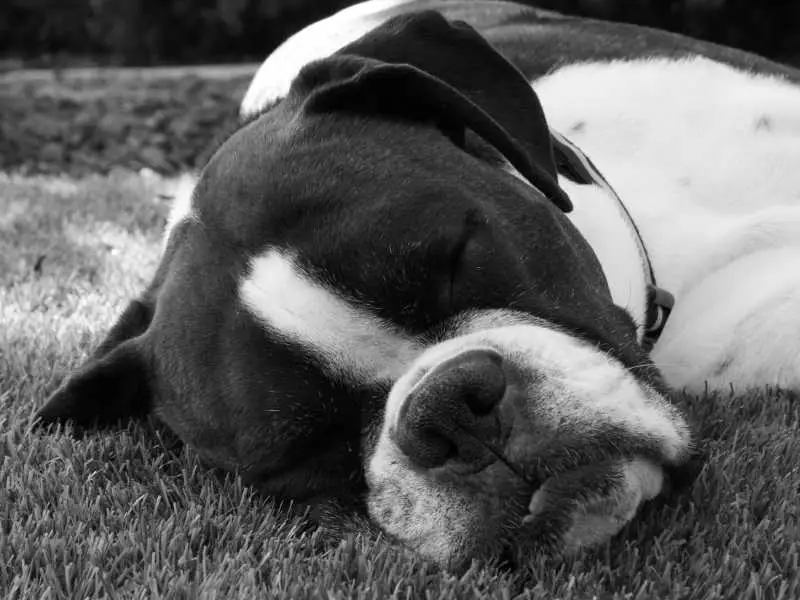
While fawn, brindle, and white are the most recognized coat colors of Boxers, there exist several other, less common coat variations that add a touch of uniqueness to this already fascinating breed.
Black Boxers, for instance, are a striking variation. Despite their name, they aren’t entirely black. Instead, they’re brindles with dense black striping that often nearly conceal the background color. This combination results in a captivating and somewhat mysterious appearance.
Another intriguing variation is the Reverse Brindle Boxer. These Boxers have a fawn-colored base coat with dark striping that appears more prominent than the fawn background. The stark contrast between the dark stripes and the lighter fawn background creates an arresting visual effect.
Beyond these, Boxers can also exhibit a mix of fawn and brindle with white markings, resulting in a wide array of unique and eye-catching coat patterns. The precise combination of genes and their inheritance patterns can lead to a diverse spectrum of appearances within this category.
The genetics responsible for these less common variations involve the interplay of fawn and brindle genes, as well as the genes that determine white markings. This complexity can lead to a variety of coat colors and patterns, making each of these Boxers a one-of-a-kind work of art.
In this world of diverse coat colors and patterns, Boxers continue to captivate us with their individuality. Whether they sport the classic fawn and black mask, exhibit the elegance of reverse brindle, or showcase other unique variations, Boxers are a testament to the beauty of genetic diversity within a beloved breed.
Coat Color and Its Role in Breed Standards 📜
In the world of dog shows and breed standards, a Boxer’s coat color plays a significant role in the evaluation of the dog’s conformation and adherence to breed standards.
The American Kennel Club (AKC) recognizes three primary coat colors for Boxers: fawn, brindle, and white. The breed standard carefully defines these colors and specifies the acceptable variations within each category.
Fawn Boxers
For fawn Boxers, the AKC standard describes a range of shades, from light tan to dark deer-red (often referred to as mahogany). While fawn is the primary color, a black mask on the muzzle is a defining characteristic of this breed. However, this black mask should not be excessive, as it should not detract from the dog’s true Boxer expression.
Brindle Boxers
Brindle Boxers have a fawn base coat with black striping, creating a distinct tiger-stripe pattern. The striping can vary in degree, from lighter to darker, and in thickness. The brindle pattern mustn’t overshadow the fawn background.
White Boxers
Then there are white Boxers, which are unique due to their predominantly white coat with little to no markings. However, the presence of white markings should not exceed one-third of the dog’s overall coat, with excessive white on the back or flanks considered undesirable by the AKC standard.
In confirmation events and dog shows, Boxers are judged based on how closely they adhere to these coat color standards. Deviations from the defined colors can affect a Boxer’s eligibility and success in these events. For example, a Boxer with a coat color that deviates significantly from the standard may be disqualified from conformation competitions.
Beyond the show ring, coat color also impacts the perception of the breed. Many people are drawn to the classic fawn and black-masked appearance of Boxers, which is often associated with their friendly and confident personalities. However, it’s important to remember that coat color is just one aspect of this remarkable breed, and Boxers of all colors can be equally loving, loyal, and intelligent companions. In the end, it’s the Boxer’s heart and spirit that truly defines this breed.
Genetics and Breeding Considerations 🧬
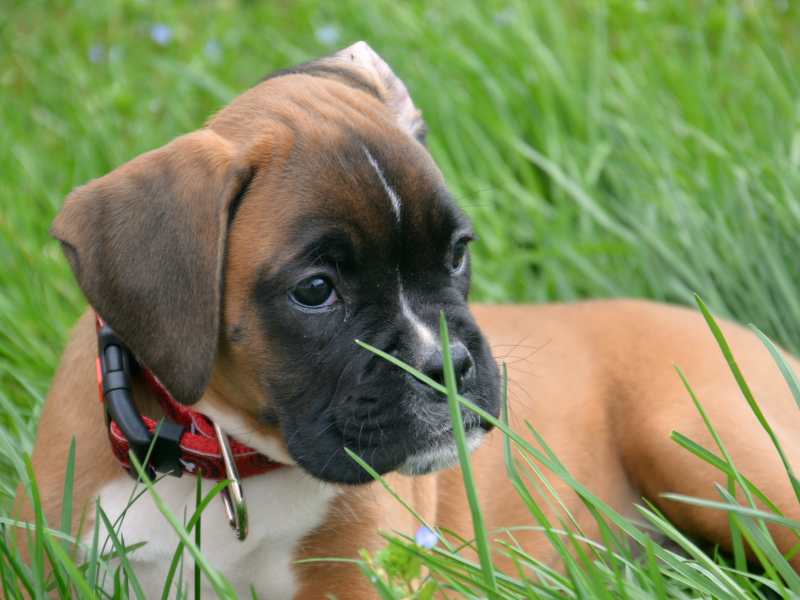
Understanding the genetics behind Boxer coat colors is essential for breeders and enthusiasts alike. Boxer coat colors are determined by two different genes: one for fawn and another for brindle. These genes play a crucial role in shaping the coat colors and patterns we see in Boxers.
When it comes to inheritance, a Boxer inherits one gene for coat color from each parent. In the case of Boxers, the brindle gene is dominant over the fawn gene. This means that if a Boxer inherits one brindle gene from either parent, it will display the brindle pattern. However, if both genes are fawn, the Boxer will have a fawn coat.
The genetics behind white Boxers are more intricate. It involves two genes for coat color and two genes for white markings. The interplay of these genes determines whether a Boxer will be white, have markings, or exhibit other variations.
Breeding for specific coat colors in Boxers can be a complex process due to the inheritance patterns. Achieving desired outcomes involves selecting appropriate parent dogs with the right combination of genes. However, it’s essential to approach breeding with ethical considerations.
Ethical breeding practices prioritize the health and well-being of the dogs above all else. While coat color is undoubtedly a defining trait, responsible breeders should never compromise the health of the Boxers for the sake of achieving a particular color outcome.
Responsible ownership, too, plays a significant role. Regardless of coat color, all Boxers need proper care, love, and socialization. What truly matters is the bond between a Boxer and its owner, transcending the boundaries of appearances.
Related: The 150 Most Popular Boxer Dog Names
Conclusion
In the world of Boxers, coat colors paint a vibrant and diverse picture. The two primary coat colors, fawn, and brindle, with the occasional appearance of white, form the palette for this beloved breed’s unique variations. Yet, behind this beautiful tapestry lies the intricate science of genetics, with each dog inheriting specific genes from its parents.
Breeding for particular coat colors can be an elaborate endeavor, but it should always be guided by ethical principles that prioritize the health and well-being of these remarkable dogs. Coat color, although visually striking, should never overshadow the importance of temperament and overall health when choosing a Boxer to join your family.
Responsible ownership is the key to ensuring the happiness and well-rounded development of any Boxer, regardless of their coat color. It’s about providing love, care, and proper socialization to nurture the incredible bond between you and your furry companion.
As you embark on your journey with Boxers, take a moment to appreciate the diversity of coat colors that this breed offers. Each shade and pattern carries its unique beauty, just as every Boxer holds its distinct personality and charm. In the Boxers world, diversity is celebrated and cherished, for it is the heart and soul of this beloved breed.
